Barcelona: Gaga over Gaudi
Escaping reality via mind-bending architecture, food markets, tapas and an ancient Catalan folk dance
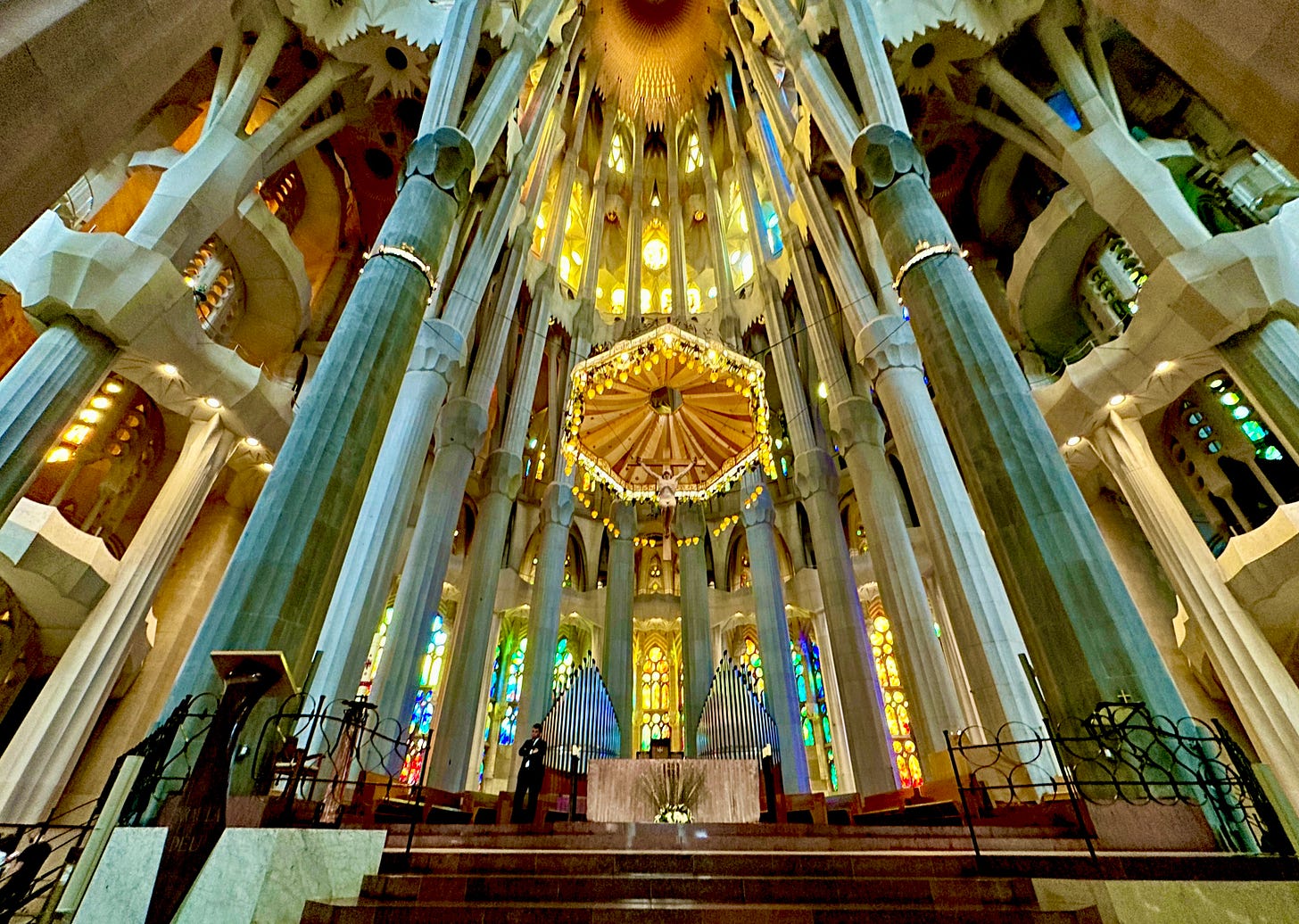
“Nothing is invented, for it's written in nature first.”
—Antoni Gaudi
Barcelona!
We visited the city again recently en route to and from a trip to Sicily. After reading about some protests among locals against the flood of tourists, I wondered whether I’d be doing anyone a favor by writing about how much I love this vibrant city that we first set foot in some 15 years ago. Would people come to town only to get squirted with water guns in some of the touristy spots along the famous La Rambla walkway by activists angry at rising rents in the once-affordable city?
No, no. They’d more likely get pickpocketed—though not if they were careful about not waving around cellphones, showy jewelry and expensive handbags.
Though people may decry the effects of overtourism, the lack of visitors may yet turn out to be an even bigger challenge as places like Sicily—and Barcelona too—cope with the effects of climate change that are leading to critical water shortages, among other things, and tourists read the news (or the tea leaves!) and make other plans.
Let’s hope it doesn’t come to that.
Meanwhile, yes, Barcelona can be crowded at popular tourist spots and at certain times of year (I would avoid summer if you can, not only because of crowds but because of heat). And you’ll need to buy your tickets ahead of time (here’s a link) for the Sagrada Família, Barcelona’s most famous landmark and Spain’s most visited—and it’s probably a good idea to do so as well for some of the other Antoni Gaudí-created masterpieces, including three houses he built in the city—Casa Batlló, Casa Milà and Casa Vicens, and for Park Güell, initially designed as a housing development for the city’s burgeoning wealthy industrialist class, then turned into a city park.
You certainly need more than the six days we had to see it all—but we did try!
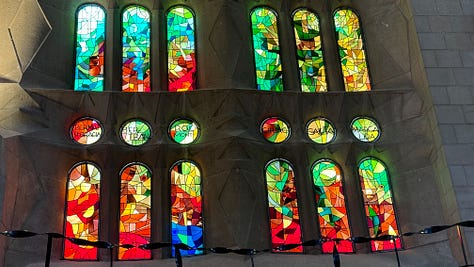
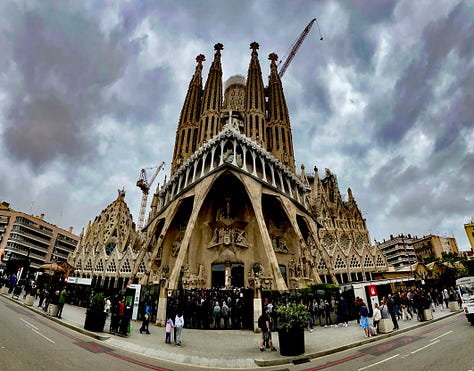

A little history
Gaudí, whose given name was Antoni Gaudí i Cornet, was enormously influential in creating the style of architecture called Catalan Modernism (also called Modernisme and Catalan Art Nouveau), that became so associated with Barcelona during a period of enormous growth in the late 19th and early 20th centuries. And yet, according to a little book about his life and work that I picked up in the Casa Batlló gift shop, Gaudí’s architecture evolved “into such a personal style that it is rather difficult to classify.”
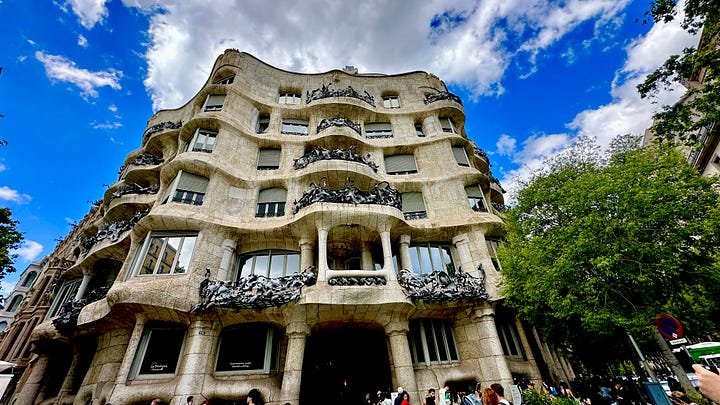
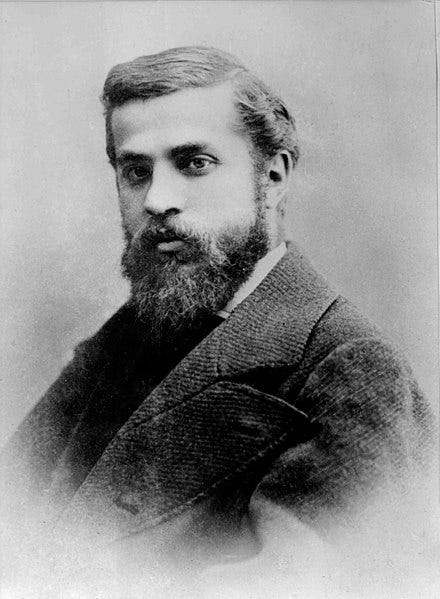
The Wikipedia entry on Gaudí noted that his work was influenced by his life’s chief passions—architecture, nature and religion. Never married and devoted to his Catholic faith as well as his Catalan roots and language, Gaudí worked symbols of his faith, heritage and the natural world into his architectural designs from his earliest commissions.
Sometimes referred to as “God’s architect,” he is said to have remarked, “My client is not in a hurry” when asked about how long it was taking him to complete the Sagrada Familia.1



One of his first commissions, Casa Vicens, is filled with evidence of the architect’s inspiration from multiple sources—Spain’s Muslim heritage; eastern art as interpreted through western eyes—referred to then as orientalism—and, most pronounced, from nature itself. Everywhere there are wild, rich colors and geometric patterns, flowered tiles, birds, leaf patterns, Arabic-style doorways, balconies and towers.
“The straight line belongs to men, the curved one to God.”
—Antoni Gaudí
No question that Gaudí favored curved lines in many of his works, including Park Güell, La Pedrera (Casa Milà) and Casa Batlló. Mosaics made of broken tiles, pottery or china, known as trencadís or pique assiette, are standard in almost all his works, including the final one—the Sagrada Família. These days, I noticed that mosaics seem to be ubiquitous in Barcelona—part homage, and, at times, irreverent—as in a faux broken-tile McDonald’s arch I came across in the neighborhood where we were staying.




Casa Batlló, located almost directly across from our hotel on the fashionable Passeig de Gràcia avenue, was a constant magnet for both us and everyone else—there seemed to be a crowd staring up at it at all times, even when it was closed. No wonder—it’s pretty fun to look at!

Tragic ending
Gaudí was devoted to his work, never marrying after being rejected by the one woman he was attracted to in his early 30s, living at one point with his father and his niece, and at the end of his life moving into the Sagrada Familia, the sacred place that represented the culmination of his artistic, religious and personal ambitions.
The architect, a devout, humbly dressed soul en route to church in June 1926, was run over by a tram, mistaken for a beggar, and not given adequate care for his wounds. He died and was buried in the crypt of the Sagrada Família, which was only a quarter completed at the time.
The basilica, under construction since 1882 is scheduled to be completed in 2026—100 years after Gaudí’s death.
Beyond Gaudí
As you can tell, I’m more than a little obsessed with Antoni Gaudí—and Barcelona does seem to be his town. But there are other sights to see, including (sticking with the arts), museums for both Picasso and Miro, and, further afield in the coastal town of Figueres, the spectaclar Dalí Museum-Theater.
And you gotta eat. We had fun visiting a couple of markets—including the picturesque and wildly popular La Boqueria in La Rambla and a much quieter, local market, Mercat de la Concepció.
We also re-visited one of our favorite destinations from a previous trip, the Gothic quarter, (Barri Gòtic) with its narrow streets and famous cathedral, where on Sundays you can watch circles of men and women dancing the traditional Catalan Sardana folk dance.
The steps look pretty simple, but the dancers clearly know what they are doing, so you can’t just waltz (or two-step) in—much as you might like to!
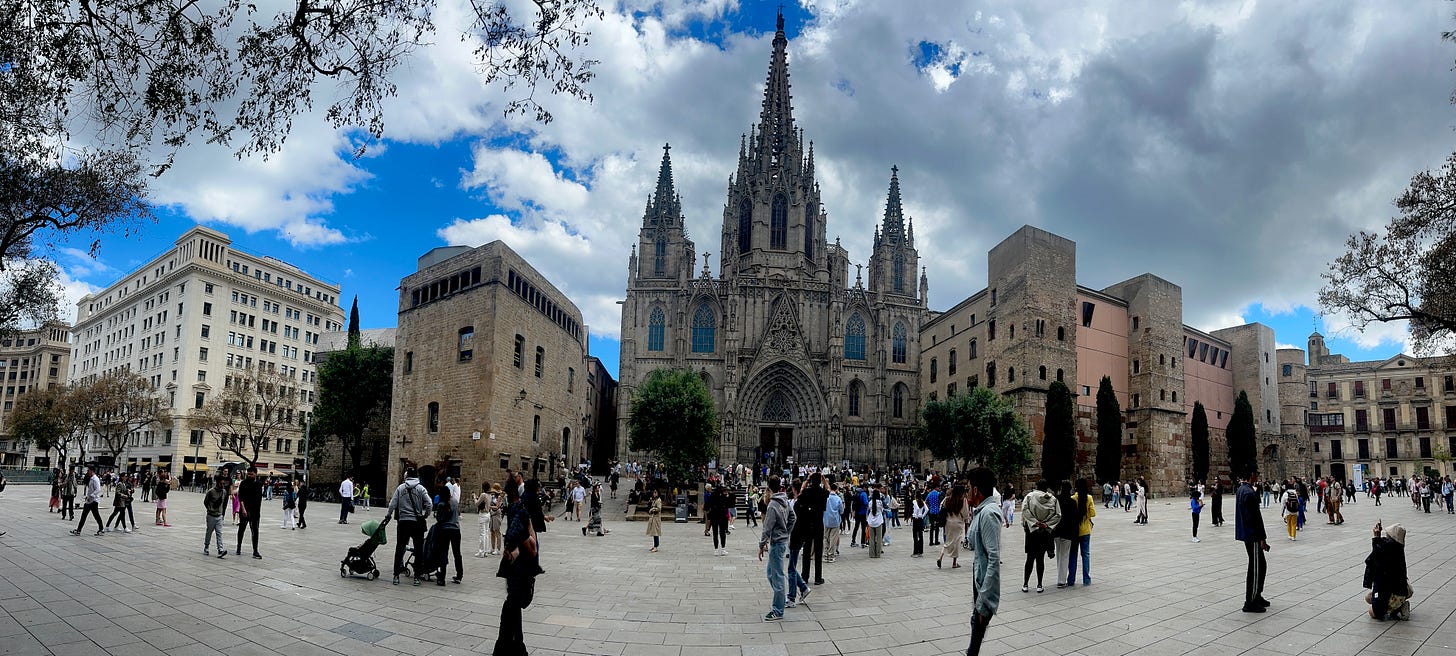
We sampled some of my favorite tapas on our own and with friends Xavier and Manda, who patiently explained how you make the traditional bread with tomato—pa amb tomàquet in Catalan—with slices of crusty bread, rubbed with a cut tomato, a sprinkling of salt and some olive oil. A slice of Iberian ham (jamón ibérico) was optional but delicious.

And of course we ate some of our other favorite tapas—pimientos de Padrón (blistered Padrón peppers)—salty, very lightly charred little peppers bursting with flavor—and patatas bravas, fried potatoes in a creamy, slightly spiced and smoky sauce.
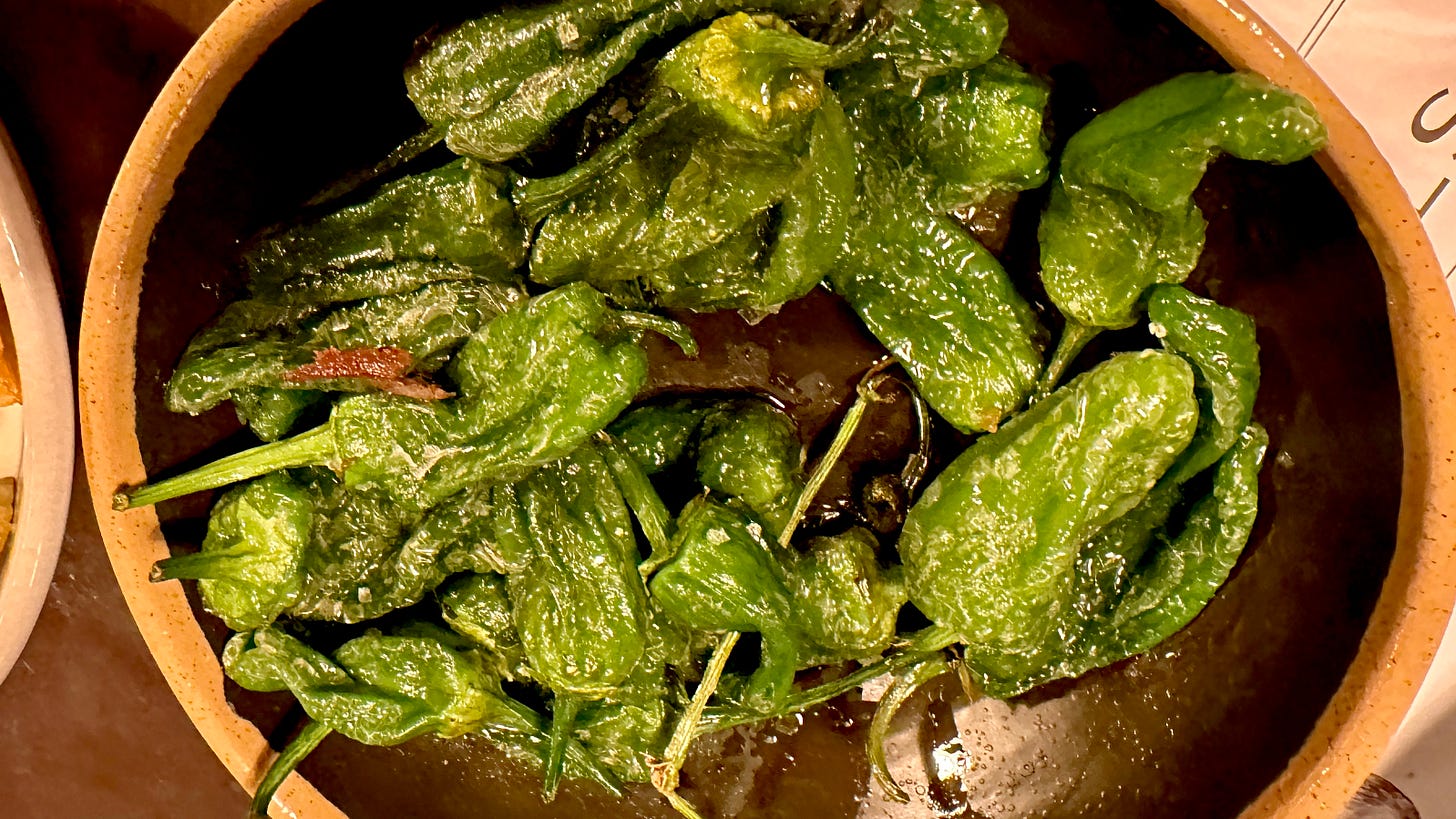
Another favorite tapa was the Spanish tortilla—tortilla española in Spanish, truita espanyola in Catalan—essentially an open-faced omelet made from potatoes and onions cooked in plenty of oil, mixed with eggs and browned well on both sides. It’s quite delicious when prepared well. We had one version we loved and another that wasn’t as good. I can’t wait to try making my own. Hopefully it will come out and I’ll share the recipe.
Just a couple more pictures from our short sojourn in beautiful Barcelona.

Miguel, who sells codfish fritters at La Boqueria market (below), said he can communicate with his customers in 12 languages. “This market is crazy,” he said. “It is a market of Babel!” And the cod fritters were delicious!
Even with the crowds, remember, there’s only one Barcelona, and hundreds of great side streets waiting to be explored. I can’t wait to go back!
Thanks for reading, liking, commenting, subscribing and sharing. If you’re new here, welcome!
Adiós!
Ruth
Glancey, J. (2011, Sept. 23) “Gaudí’s unfinished Sagrada Família does not need a finish date,” The Guardian. https://www.theguardian.com/commentisfree/2011/sep/23/gaudi-sagrada-familia





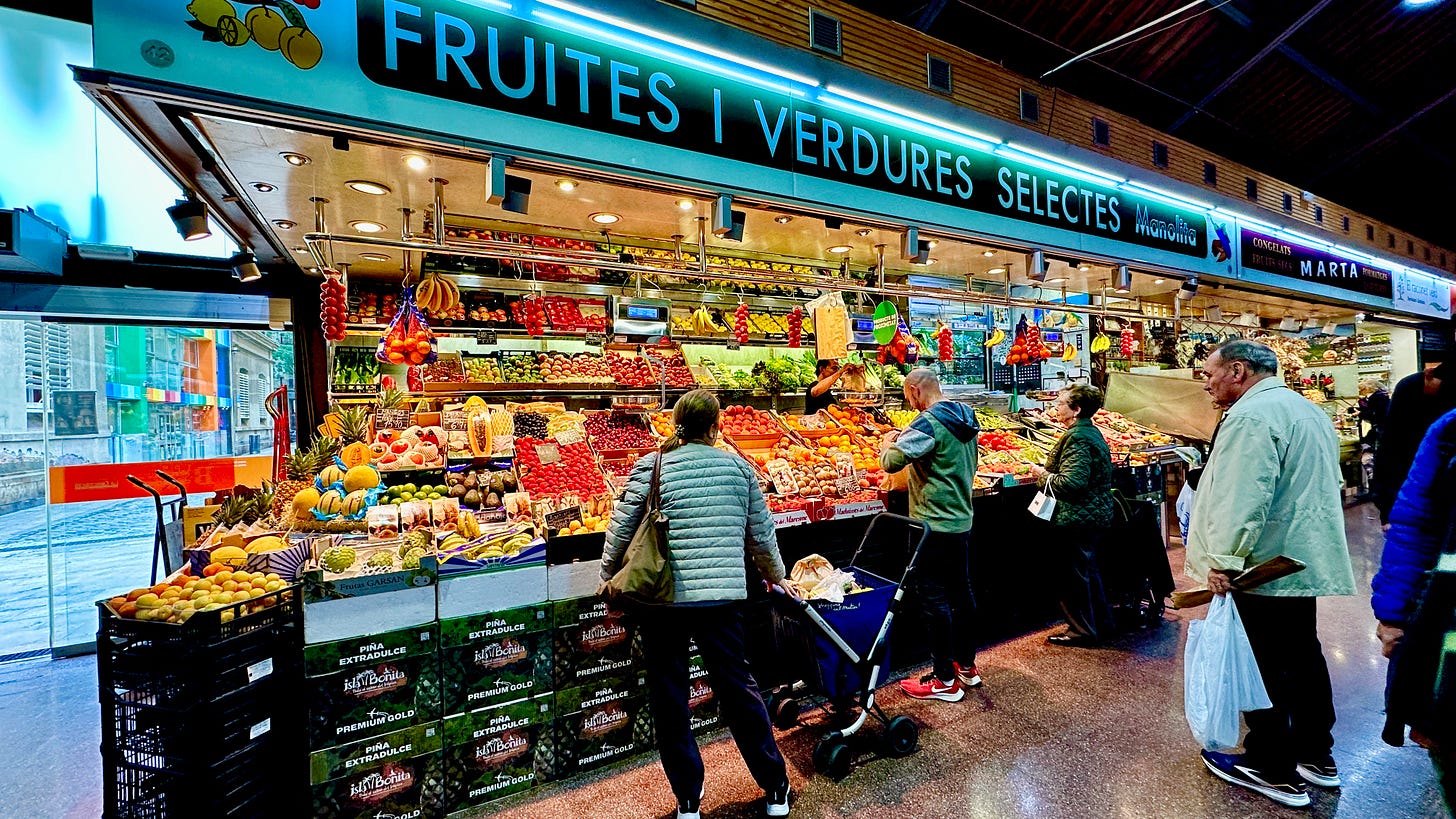

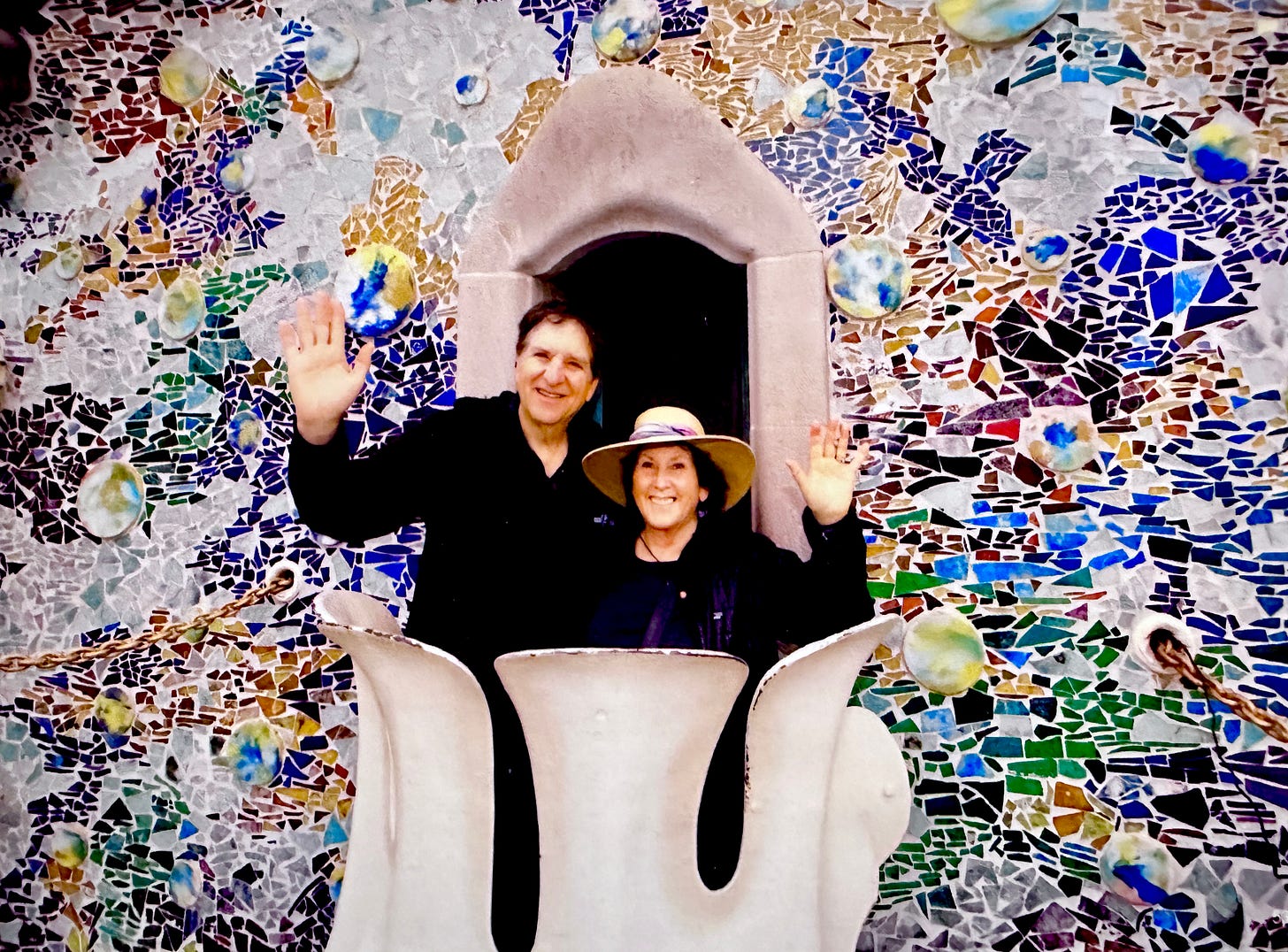
Joan, hi. I was at the Vineyard reception and Author's talk last week. We met briefly. I mentioned you in a recent post so I thought I'd share it with you! The evening was really special and I loved meeting all three of you!! https://trustedtables.substack.com
Ruth, your posts are always amazingly informative. Thanks to you for doing the research and providing the photos. I almost feel like I'm there. Can't wait to sample some of the recipes when you make them.